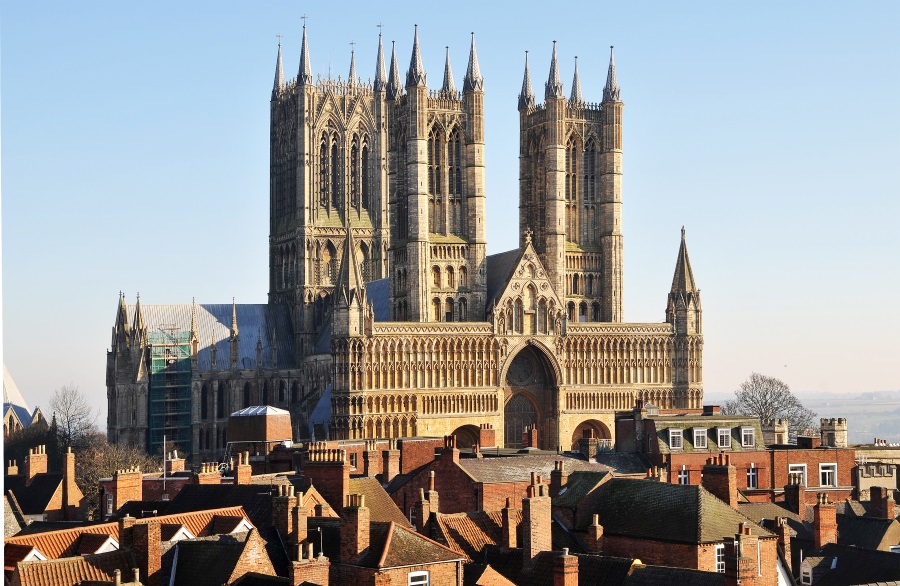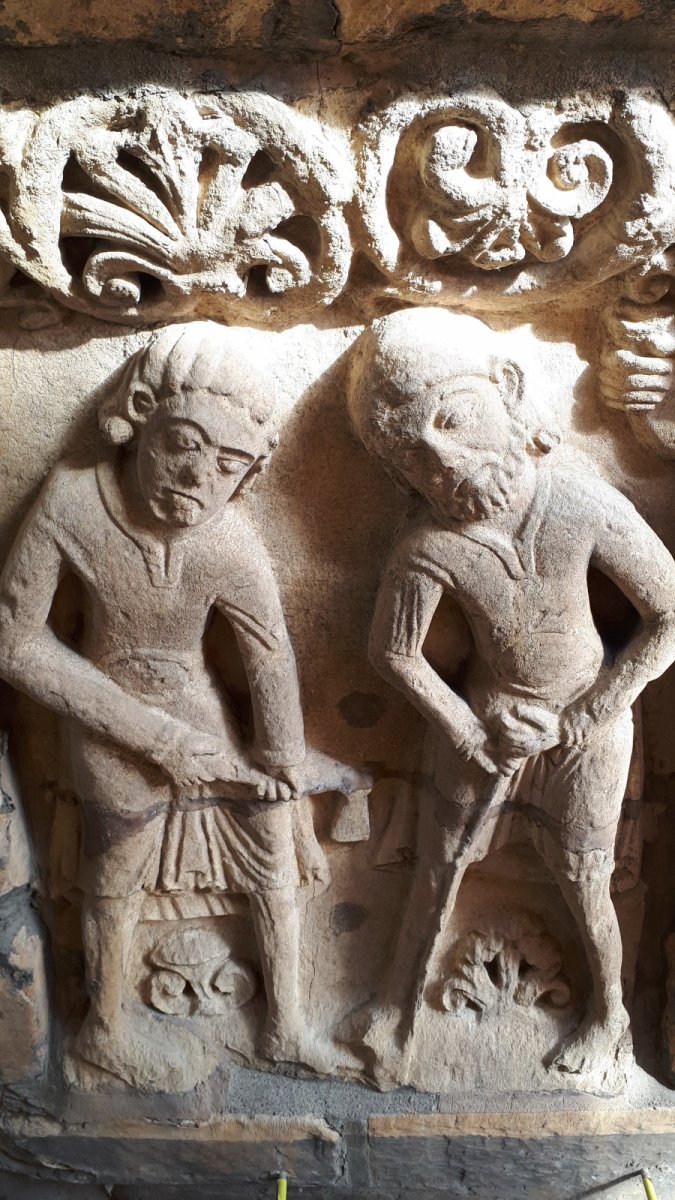As a case, the Romanesque frieze of Lincoln Cathedral’s west front has been more interesting and challenging than almost any other. The debate over recent decades has been about how best to do this: is it preferable to retain this fragile, ancient sculpture on the building for which it was created, or to house it where better protection is provided but where it ceases to be part of the structure? With the north run of the frieze, the decision made by the cathedral in the mid-1990s was that the best option was to replace the Romanesque carvings with replicas (carved by John Roberts and unveiled in 2001), leaving only one panel (an 18th century ‘copy’) in situ. We were not persuaded by this approach – then, or now.

Lincoln Cathedral is unquestionably a building of international importance. John Ruskin once called it ‘the most precious piece of architecture in the British Isles’. This astounding building dominates all approaching views into Lincoln and it is the home of one of the four surviving first editions of the Magna Carta.
For centuries the cathedral has been the most important religious building in the area, proudly displaying one of its most celebrated features to visitors: the surviving part of the Romanesque sculptured frieze on the west facade depicting the tortures inflicted in hell and stories of Noah and Daniel.
In late 2015 we were invited by the Cathedrals Fabric Commission for England to attend a day of presentations covering a range of conservation issues, including those affecting the gallery of kings, two west front statues of bishops and the Romanesque frieze. We also received the Policy and Method Statements for both items in 2016, which outlined the procedures to be followed in each case. 
After careful consideration of the documents we suggested the appointment of a consultant conservator as an independent advisor for the duration of the works. We also warmly welcomed the aim of the conservation programme for the gallery of kings and two bishops on the west front “to retain the statues on the cathedral and undertake appropriate work to support them in that location”. In our view, in situ conservation offers the best prospect of retaining interest, character and patina.
In March 2019 we were invited to take part in further discussions at the cathedral. Expert SPAB members were involved and considered a conservator’s report as well as inspecting the frieze. The report was thorough and reaches sensible conclusions, though we felt it perhaps lacked a rehearsal of the complicated philosophical arguments that have always under-lain the frieze’s conservation. In most respects we supported the plan suggested in the report, though we did take issue with the intention to remove one of the more fragile panels for conservation. Experience suggests that when removed the frieze sculpture tends to fragment. As the engineering conclusion is that the slender frieze panels are unlikely to be contributing much to the structural integrity of the west front, except in a few localised areas, the need for removal is not compelling.
Our view is that while erosion may lessen legibility of fabric and sculpture, ageing and decay bring special qualities to a building. We also believe that a conservative approach which maintains the physical link between building and sculpture is most likely to prove best. There is no perfect solution to the sculpture’s conservation but the best balance between protection of interest and public enjoyment of the frieze’s beauty can be offered by in situ work. The long-term effect of imperfect environmental conditions will be further decay, but this can be mitigated through recording and physical conservation techniques. Future care is helped by the fact that the frieze is 18m off the ground, making access for regular maintenance reasonably straightforward.
We have not opposed the cathedral’s intention to commission four sculptors to carve new panels, but have urged that this is purely for visitor centre interpretation and should not in any way influence conservation decisions about the frieze.
Images credit: Lincoln Cathedral
